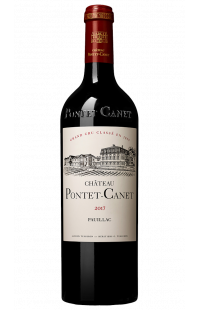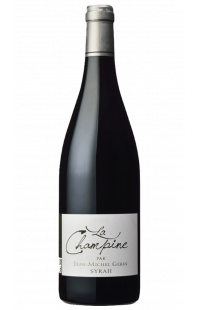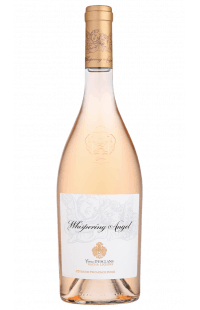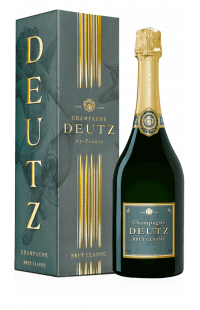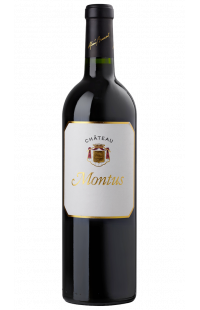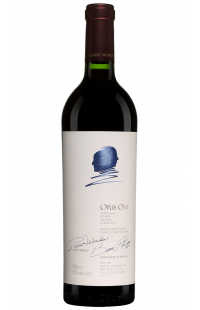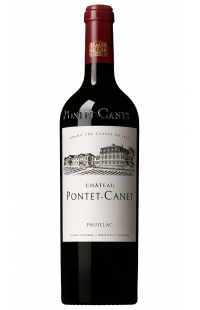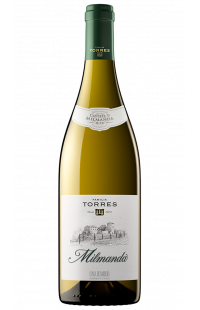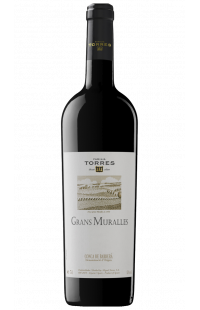- Menu
- All our wines
- Bordeaux
-
Rhône
-
Burgundy
-
Rosés Wines
-
Champagne
- France
-
World
- PRIMEURS
- ORGANIC WINES
Conca de Barberà
The Wines of Conca de Barberà: A Complete Guide to Discovering an Authentic Appellation
Conca de Barberà, a wine region nestled in Spanish Catalonia, is a hidden gem among wine enthusiasts. Benefiting from a Protected Designation of Origin (PDO), this region produces wines of exceptional quality, marked by aromatic freshness and great complexity. Off the beaten path, the wines of Conca de Barberà stand out for their authenticity and faithful reflection of the terroir. This article offers you a complete immersion into the world of this appellation, exploring its history, terroir, grape varieties, and much more.
The wines of Conca de Barberà are more than just a Protected Designation of Origin; they represent a winemaking tradition deeply rooted in the history and terroir of Catalonia. Produced in a region surrounded by mountains and crossed by the Francolí and Anguera rivers, these wines are the result of a perfect balance between nature and human expertise.
Located in northeastern Spain, in the heart of Catalonia, Conca de Barberà is a small wine region that spans about 5,000 hectares. Its landscape is marked by valleys and hills, surrounded by mountains that protect the vineyards from strong winds and extreme climates. This unique geographical configuration, combined with a temperate Mediterranean climate, offers ideal conditions for viticulture.
The vineyards of Conca de Barberà are located between 350 and 600 meters above sea level, which promotes a great diversity of microclimates within the region itself. This diversity allows winemakers to cultivate a wide range of grape varieties while preserving the freshness and acidity of the grapes thanks to significant temperature variations between day and night.
History of Conca de Barberà
Historical Origins of the Vineyard
The viticultural roots of Conca de Barberà date back to Roman times when the first vines were planted in the region. However, it was during the Middle Ages that viticulture truly flourished, thanks to Cistercian monks who introduced advanced winemaking techniques. These monks, notably those from the Poblet Abbey, were the first to understand and exploit the potential of the local terroir, making Conca de Barberà a renowned center of wine production.
The Influence of the Cistercian Monks
The Cistercians brought not only their expertise but also a meticulous and respectful approach to nature. They selected the best soils, optimized the vines' exposure to the sun, and introduced grape varieties that would become emblematic of the region. Today, their legacy is found in the exceptional quality of Conca de Barberà wines, which combine tradition and innovation.
The Unique Terroir of Conca de Barberà
Limestone and Clay Soils
The terroir of Conca de Barberà is mainly composed of limestone and clay soils, with variations depending on the altitude and geographical position of the vineyards. These mineral-rich soils allow the vines to produce concentrated and aromatic grapes while maintaining balanced acidity. This geological composition contributes to the complexity of the region's wines, giving them fine aromas and a well-defined tannic structure.
The Impact of Altitude on the Vine
The altitude of the vineyards, ranging between 350 and 600 meters, plays a crucial role in the quality of Conca de Barberà wines. At these heights, the vines benefit from optimal sun exposure during the day while enjoying cool nights. These conditions allow for slow and steady ripening of the grapes, preserving their freshness and aromatic potential. Altitude also helps protect the vines from diseases, reducing the need for chemical interventions.
Mediterranean Climate with Mountain Influences
The climate of Conca de Barberà is typically Mediterranean, with hot, dry summers and mild winters. However, mountain influences and altitude bring a certain freshness and relative humidity, creating ideal conditions for viticulture. Sea breezes, notably the marine breeze that penetrates inland, temper the summer temperatures, thus avoiding excessive heat that could damage the grapes. This combination of climatic factors promotes great aromatic diversity and gustatory complexity in the region's wines.
Grape Varieties Cultivated in Conca de Barberà
Indigenous and International Varieties
Conca de Barberà stands out for the richness of its grape varieties, mixing indigenous and international varieties. Among the local grapes, Trepat is undoubtedly the most emblematic. This red grape, little known outside Catalonia, is mainly used to produce light and fruity rosé wines, as well as elegant and spicy red wines. Besides Trepat, other indigenous varieties like Macabeu (used for white wines) play an important role in the region's vinicultural identity.
In parallel, international grape varieties such as Cabernet Sauvignon, Merlot, and Chardonnay have also been successfully introduced, offering diversified options and allowing the winemakers of Conca de Barberà to create unique blends that combine tradition and modernity.
The Role of Trepat in Regional Identity
Trepat, the emblematic red grape variety of Conca de Barberà, is often compared to Pinot Noir due to its ability to produce subtle and refined wines with notes of red fruits and spicy touches. This grape, cultivated mainly in this region, is the cornerstone of Conca de Barberà's vinicultural identity. It is used not only for still wines but also to produce sparkling wines like Cava, where it brings finesse and freshness. Its presence in the region's vineyards is a testament to the winemakers' commitment to their roots and the preservation of their viticultural heritage.
Winemaking Process in Conca de Barberà
Traditional and Modern Techniques
Winemaking in Conca de Barberà combines traditional techniques, passed down from generation to generation, with modern methods that highlight the unique characteristics of the grape varieties and terroir. Harvesting is often done by hand to ensure meticulous selection of the clusters, and the grapes are then vinified in cellars where tradition and innovation meet.
Fermentation can take place in stainless steel tanks to preserve the purity of the aromas or in oak barrels to add complexity and woody notes. The aging of the wines, whether in barrels or bottles, is a crucial step for the development of aromas and flavors, and each winemaker brings their personal touch depending on the style of wine they wish to produce.
The Importance of High-Altitude Winemaking
High-altitude winemaking, characteristic of Conca de Barberà's vineyards, plays a determining role in the quality of the wines. Cooler temperatures and significant thermal amplitudes allow for slow grape ripening, promoting optimal aromatic extraction and balanced natural acidity. These conditions contribute to producing wines of great finesse, with well-defined aromas and a structure that allows them to age well.
Types of Wines Produced in Conca de Barberà
Red Wines
The red wines of Conca de Barberà are characterized by their elegance and complexity. Mainly from grape varieties like Trepat, Garnacha, and Cariñena, these wines offer a rich aromatic palette ranging from fresh red fruits to sweet spices, with earthy notes characteristic of the region's limestone terroir. They are often vinified to preserve their freshness and vivacity while developing a beautiful tannic structure.
White Wines
The white wines of Conca de Barberà are equally remarkable, often made from grape varieties like Macabeu, Parellada, and Chardonnay. These wines are distinguished by their freshness, floral and fruity aromas, and a lively acidity that gives them great drinkability. The limestone soils and climatic conditions allow for the production of whites of great finesse, ideal for accompanying Mediterranean dishes.
Rosé Wines
Rosés, mainly made from the Trepat grape, are light and refreshing wines, perfect for summer days. They are characterized by notes of fresh red fruits like strawberry and raspberry and a lively acidity that makes them easy to drink while maintaining a certain complexity.
Sparkling Wines
Conca de Barberà is also renowned for its sparkling wines, notably Cava, produced using the traditional method. These sparkling wines, made from grape varieties like Macabeu, Xarel·lo, and Parellada, are appreciated for their finesse, delicate effervescence, and aromas of white-fleshed fruits and brioche. They are perfect for celebrations or accompanying light dishes.
Tasting Conca de Barberà Wines
Organoleptic Characteristics
Conca de Barberà wines stand out for their organoleptic characteristics marked by their unique terroir. The reds offer aromas of red and black fruits, with spicy touches and sometimes mineral notes. On the palate, they are often balanced, with silky tannins and an acidity that brings freshness and length. The whites are characterized by floral aromas, citrus notes, and a beautiful vivacity on the palate. The rosés, fresh and fruity, present a lively acidity that makes them very pleasant to taste.
How to Enjoy Conca de Barberà Wines
To fully appreciate Conca de Barberà wines, it is recommended to serve them at the appropriate temperature: reds slightly chilled (around 16-18°C), whites and rosés cooler (8-10°C). These wines can be enjoyed young for their fruitiness and freshness or older for their complexity and structure. It is also advisable to taste them in suitable glasses, which allow the aromas to concentrate and explore the full richness of the bouquet.
Food and Wine Pairings with Conca de Barberà
Classic Pairings
Conca de Barberà wines pair perfectly with traditional Catalan cuisine. The reds wonderfully accompany roasted meat dishes like lamb or pork, as well as aged cheeses. The whites are excellent with seafood, grilled fish, or composed salads, while the rosés, thanks to their freshness, go well with light Mediterranean dishes like tapas or salads.
Creative Pairings
For culinary adventurers, Conca de Barberà wines offer many possibilities for creative pairings. For example, a Trepat red wine can be surprising with a dark chocolate dessert, where the tannins balance the richness of the chocolate. Similarly, a Macabeu white wine can pair with exotic dishes like fish curry or sushi, where the wine's acidity pleasantly contrasts with spicy or umami flavors.
Conca de Barberà in the International Wine Market
Exports and International Recognition
Although Conca de Barberà wines are still relatively unknown internationally, their quality has allowed them to make a place in the global market. Exports, notably to Europe, North America, and Asia, are constantly increasing, and the region's wines are starting to receive awards in international competitions. This growing recognition demonstrates Conca de Barberà's potential to become a major player in the wine world.
The Role of Cooperative Wineries
Cooperative wineries play an essential role in promoting Conca de Barberà wines. By pooling the resources and expertise of many winemakers, they produce high-quality wines while preserving local traditions. These cooperatives are also at the forefront of innovation, experimenting with new winemaking techniques and exploring new markets. Their contribution is crucial to ensuring the sustainability of viticulture in the region.
The Best Wineries to Visit in Conca de Barberà
For wine enthusiasts, visiting the wineries of Conca de Barberà is an unmissable experience. Among the most renowned establishments are Celler Carles Andreu, known for its Trepat wines, and the Cave Conca de Barberà, a historic cooperative offering a wide range of typical regional wines. Celler Vega Aixalà, located at high altitude, also offers tastings of highly refined wines, made with total respect for the terroir.
Wine Tourism in Conca de Barberà
Activities and Tours for Wine Lovers
Wine tourism is booming in Conca de Barberà, with a varied offer of activities for wine lovers. Visitors can participate in guided tastings, explore the vineyards during hikes, or attend winemaking workshops to discover the secrets of wine production. Many wineries also offer tours of their facilities, where one can learn the history and techniques behind each bottle.
Wine Tourism as an Economic Driver
Wine tourism plays a crucial role in Conca de Barberà's economy, attracting thousands of visitors each year who come to discover the region's wines and culture. This sector contributes not only to promoting local wines but also to developing the local economy by supporting hotels, restaurants, and other tourism-related businesses. Wine tourism is thus an important vector for sustainable development in the region.
Ecological Impact and Sustainable Practices in Conca de Barberà
Green Initiatives and Organic Viticulture
Conca de Barberà is at the forefront of sustainable viticultural practices, with many initiatives aiming to reduce the ecological impact of wine production. Several estates have adopted organic viticulture, abandoning synthetic chemicals and favoring natural methods to protect the vines and soil. Others are implementing permaculture projects, water recycling systems, and the use of renewable energies to minimize their carbon footprint.
These sustainable practices not only preserve the environment but also improve the quality of the wines by respecting the vine's natural cycle and enhancing the terroir's biodiversity.
Wine Events and Festivals in Conca de Barberà
Annual Fairs and Festivals
Conca de Barberà is lively throughout the year with wine events and festivals celebrating the richness of its viticultural heritage. Notably, the Fira del Trepat, an event dedicated to the Trepat grape variety, allows visitors to taste wines and discover food and wine pairings in a festive atmosphere. The Conca de Barberà Wine Competition is another important event where the region's best wines are awarded.
Promoting Conca de Barberà Wines
These events play a crucial role in promoting Conca de Barberà wines, attracting not only locals but also wine enthusiasts from around the world. They offer winemakers a platform to showcase their products, interact with consumers, and strengthen the reputation of their wines. These festivals are also an opportunity to discover the region's culture and traditions in a friendly and authentic atmosphere.
Testimonials from Conca de Barberà Winemakers
The winemakers of Conca de Barberà are the guardians of ancestral know-how passed down through generations. Their passion for the vine and wine is reflected in every bottle, and their testimonials offer valuable insight into the challenges and joys of viticulture in this unique region. For example, Carles Andreu, a local winemaker, emphasizes the importance of preserving indigenous grape varieties while adopting modern techniques to improve wine quality. Others, like Josep Maria Vidal, stress the importance of innovation and experimentation to adapt to climate change and new market trends.
Investing in Conca de Barberà Wines
Investing in Conca de Barberà wines can be an excellent opportunity for wine lovers and investors. This region, still relatively unknown internationally, offers considerable growth potential, with quality wines beginning to make their mark on the global market. By investing in these wines, one also supports sustainable and environmentally friendly viticulture while having the possibility to enjoy bottles that will gain value and complexity over time.
FAQ about Conca de Barberà Wines
What sets Conca de Barberà wines apart from other Catalan wines? Conca de Barberà wines are distinguished by their freshness and complexity, resulting from the vineyards' altitude and soil diversity. The Trepat grape, unique to this region, also contributes to these wines' distinctive identity.
What are the main grape varieties cultivated in Conca de Barberà? The main grape varieties include Trepat, Garnacha, and Cariñena for reds, as well as Macabeu, Parellada, and Chardonnay for whites.
How can I get to Conca de Barberà to visit the vineyards? Conca de Barberà is easily accessible from Barcelona or Tarragona by car or train. Many wineries offer guided tours by appointment.
What types of sparkling wines are produced in Conca de Barberà? The region produces Cava, sparkling wines made using the traditional method from grape varieties like Macabeu, Xarel·lo, and Parellada.
Are Conca de Barberà wines available for export? Yes, Conca de Barberà wines are increasingly exported, notably to Europe, North America, and Asia.
What are the best food pairings for Conca de Barberà reds? Conca de Barberà reds pair well with roasted meats, aged cheeses, and traditional Catalan cuisine dishes.
Conclusion
Conca de Barberà wines represent a fascinating discovery for any wine enthusiast seeking authenticity and quality. With their unique terroir, temperate Mediterranean climate, and a winemaking expertise that dates back centuries, these wines captivate with their freshness, complexity, and character. Whether for tasting, investment, or simple discovery, Conca de Barberà wines offer an unforgettable experience, rooted in tradition but looking toward the future.
